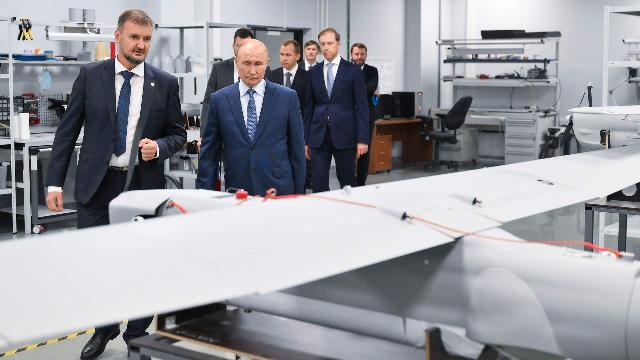In 2024 alone, the army will be supplied with about 1.4 million drones for various purposes
The production of drones in the Russian Federation is planned to increase almost 10 times this year compared to the previous one. This was announced by Vladimir Putin on September 19 at a meeting of the Military-Industrial Commission on the development of unmanned aircraft systems for special purposes in St. Petersburg. Russia needs to completely cover the needs of its armed forces, increase the production of UAVs and introduce AI technologies, the president stressed. The head of state personally got acquainted with some samples of drones, in particular the famous Orlan drone, at the defense enterprise LLC Special Technology Center. About how the Russian army is equipped today and what, in the opinion of the president, has become the key to the technological sovereignty of the Russian Federation — in the material of Izvestia.
How the development of drones affects the security of the country
Vladimir Putin has been discussing the combat readiness of the Russian Armed Forces for the second day in St. Petersburg. On the Day of the Gunsmith, which is traditionally celebrated on September 19, he arrived at one of the defense enterprises of the Northern capital — LLC "Special Technology Center" (STC). It specializes in the production of unmanned aerial vehicles, electronic warfare systems, as well as communication systems. Right on the site of the enterprise, he held a meeting of the Military-Industrial Commission on the development of special-purpose UAVs. A whole range of issues related to the development of unmanned aircraft systems is on the agenda.
"The topic is important and in demand, we all know it well, all over the world — now it has become clear to everyone — it is directly related to ensuring the security of the country. Drones of various classes have already become an integral part of modern warfare. The effectiveness of the multipurpose use of unmanned systems on the battlefield was confirmed during a special military operation," the President stressed.
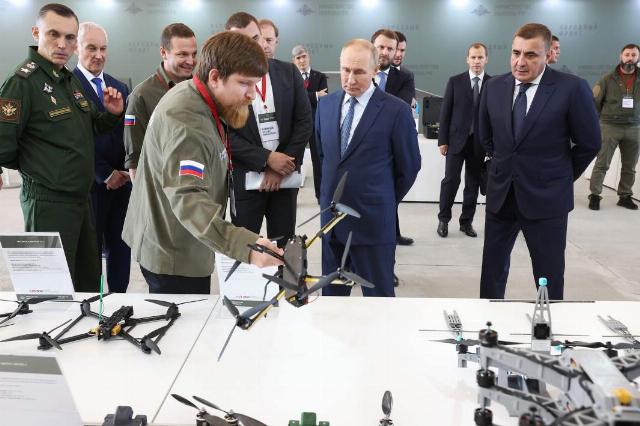
Russian President Vladimir Putin during a visit to the site of LLC "Special Technology Center" (STC) in St. Petersburg
Image source: Photo: RIA Novosti/Valery Sharifulin
He got acquainted with some samples of weapons and equipment personally: at the site, the head of state was presented with modern unmanned aircraft systems developed and manufactured by the domestic industry with target loads and special software.
Putin visited the exhibition of samples of robotic complexes. In particular, the President was shown tracked platforms, kamikaze drones, a sample of barrage ammunition and unmanned boats. Separately, the president was shown the Orlan drone, which is used in the area of its own. This is exactly what the STC produces — today it is one of the most popular UAVs in the world in its class.
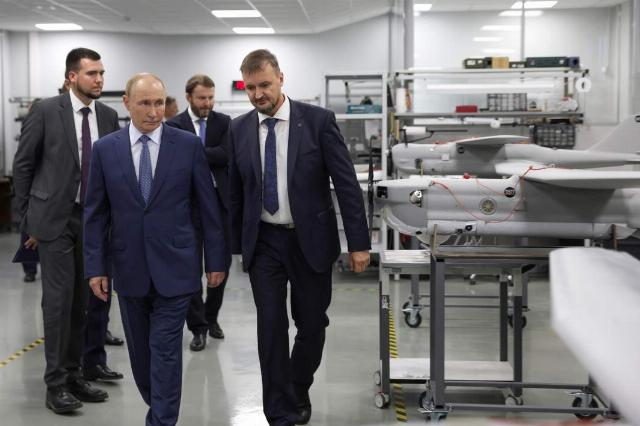
Russian President Vladimir Putin during a visit to the site of LLC "Special Technology Center" (STC) in St. Petersburg
Image source: Photo: RIA Novosti/Gavriil Grigorov
Thanks to drones, the Russian military gets an advantage on the battlefield, Vladimir Putin stressed at the meeting. According to him, if in 2023 about 140 thousand unmanned aerial vehicles of various types were delivered to the armed forces, then this year the output is planned to increase almost 10 times. The national project "Unmanned Aircraft Systems", which has been in operation since 2024 and is designed until 2030, will also help the production of domestic components and materials for drones.
"Among its priorities is to promote the production of domestic components and materials for drones. This is the key to technological sovereignty in the most important area for us," the head of the Russian Federation stressed.
What do the enterprises of the national defense industry produce?
Vladimir Putin has set the task to completely cover the needs of the Armed Forces of the Russian Federation. At the same time, it is necessary not only to consistently increase the production of unmanned vehicles, but also to improve its tactical and technical characteristics by introducing elements of artificial intelligence. "Almost every week there are certain updates, and whoever reacts faster to these demands on the battlefield wins," Vladimir Putin said.
Separately, he noted the contribution of the so-called people's defense industry to solving the tasks of its own. The products produced by these enterprises, including drones, are not inferior in quality to factory ones, the president said.
Russian President Vladimir Putin holds a meeting of the Military-Industrial Commission in St. Petersburg
Image source: Photo: RIA Novosti/Gavriil Grigorov
"I know that the Ministry of Defense and the People's Front have done a lot to unlock the potential of the national defense industry: the testing base for quality and functionality checks of new samples is expanding, the technical council is working on an ongoing basis, according to which supplies of the most in—demand samples are organized in a short time," the president said.
As several developers told Izvestia, requests for the national defense industry have increased hundreds of times over the past two years. At the same time, some enterprises had to be completely redesigned.
— We tried to collect the products of the guys — civilian manufacturers, who had never been engaged in any near-war developments before the start of their own, — says Boris Podolny, deputy head of the executive committee of the Popular Front. — And the guys immediately, actually fighting, began to assemble drones, invent electronic warfare tools.
How is the Russian army armed today
Recently, the country's defense capability has grown, and innovative weapons systems have begun to arrive in the troops, military expert Dmitry Kornev is sure.
— First of all, we need to talk about UAVs, which radically changed the picture on the battlefield. Moreover, we are talking about tactical and extended—range vehicles - this is a new technological product. In particular, Lancets began to be mass-produced and FPV drones appeared, which were not in service with the army before the special operation," he told Izvestia.
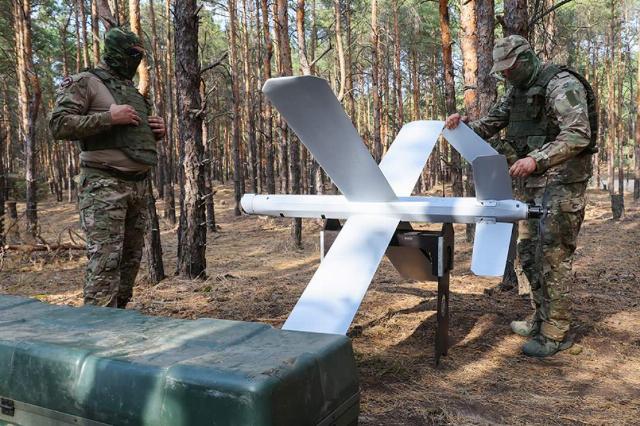
Servicemen of the Dnepr group of forces during the assembly of the Lancet intelligent barrage complex in the area of the special operation
Image source: Photo: TASS/Alexey Konovalov
The Lancets have increased their strike capabilities at ranges of more than 40 km. Previously, only MLRS or missile systems — "Hurricane", "Tornado" or "Iskander" - could hit targets at such a distance, but their ammunition is much more expensive than Lancets, so it is not rational to spend them on every target, Dmitry Kornev stressed.
The expert also noted that literally this year FPV drones appeared, controlled by fiber-optic cable, which also proved themselves well. All domestic missile systems have confirmed their importance and effectiveness, he also stressed.
— Precision—guided munitions have appeared massively for the Uragan MLRS, — the expert added. — Iskander, Kalibr and supersonic Dagger are those systems whose use has largely undermined and continues to destroy the enemy's military potential.
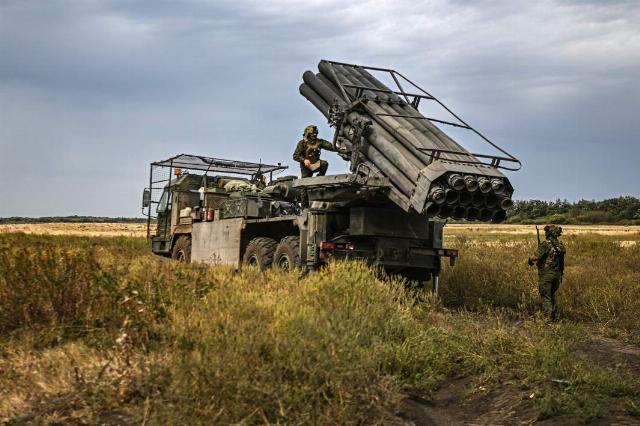
The calculation of the Hurricane MLRS of the 17th Guards Artillery brigade of the 3rd Army Corps during training in the zone of a special military operation
Image source: Photo: RIA Novosti/Sergey Bobylev
Moreover, the Dagger is the first supersonic missile in the world that has proven its effectiveness in real combat conditions. The remote mining system "Agriculture" is new, it became known on the eve of the special operation, the expert noted.
— Now it automatically provides controlled mine coverage of remote areas, — said Dmitry Kornev. — Not just throws them somewhere, but installs them on a specific area according to a given scheme. Its capabilities proved to be in demand.
Multifunctional supersonic fighter-bomber Su-34 of the Russian Aerospace Forces during a strike with unguided FAB-500 aerial bombs with a universal planning and correction module (UMPC) on an enemy stronghold and manpower in the area of responsibility of the Center group of forces
Image source: Photo: TASS/Ministry of Defense of the Russian Federation
Not so long ago, powerful high—explosive aerial bombs (fabs) received UMPC - universal planning and correction modules, military expert Roman Shkurlatov recalled.
— After the appearance of these modules, powerful aerial bombs — even three—ton ones - began to fly precisely at the target. Air defense systems against such a FAB are ineffective, and it is very good at hacking defensive systems due to its power and accuracy, which is given to it by the UMPC. The enemy still cannot find a counteraction to them," he noted.
Previously, HIMARS MLRS, Storm Shadow and SCALP cruise missiles caused a lot of trouble, Roman Shkurlatov said. However, now they are being shot down by air defense or led away from the target by electronic warfare systems.
— They began to suppress GPS signals, which are guided by HIMARS. This deprived them of their main trump card — accuracy," he concluded.
Vasilisa Yaseneva
Bogdan Stepovoy
